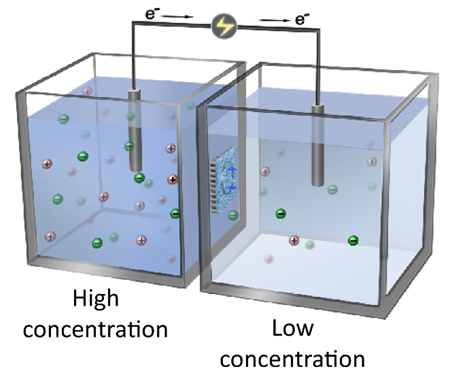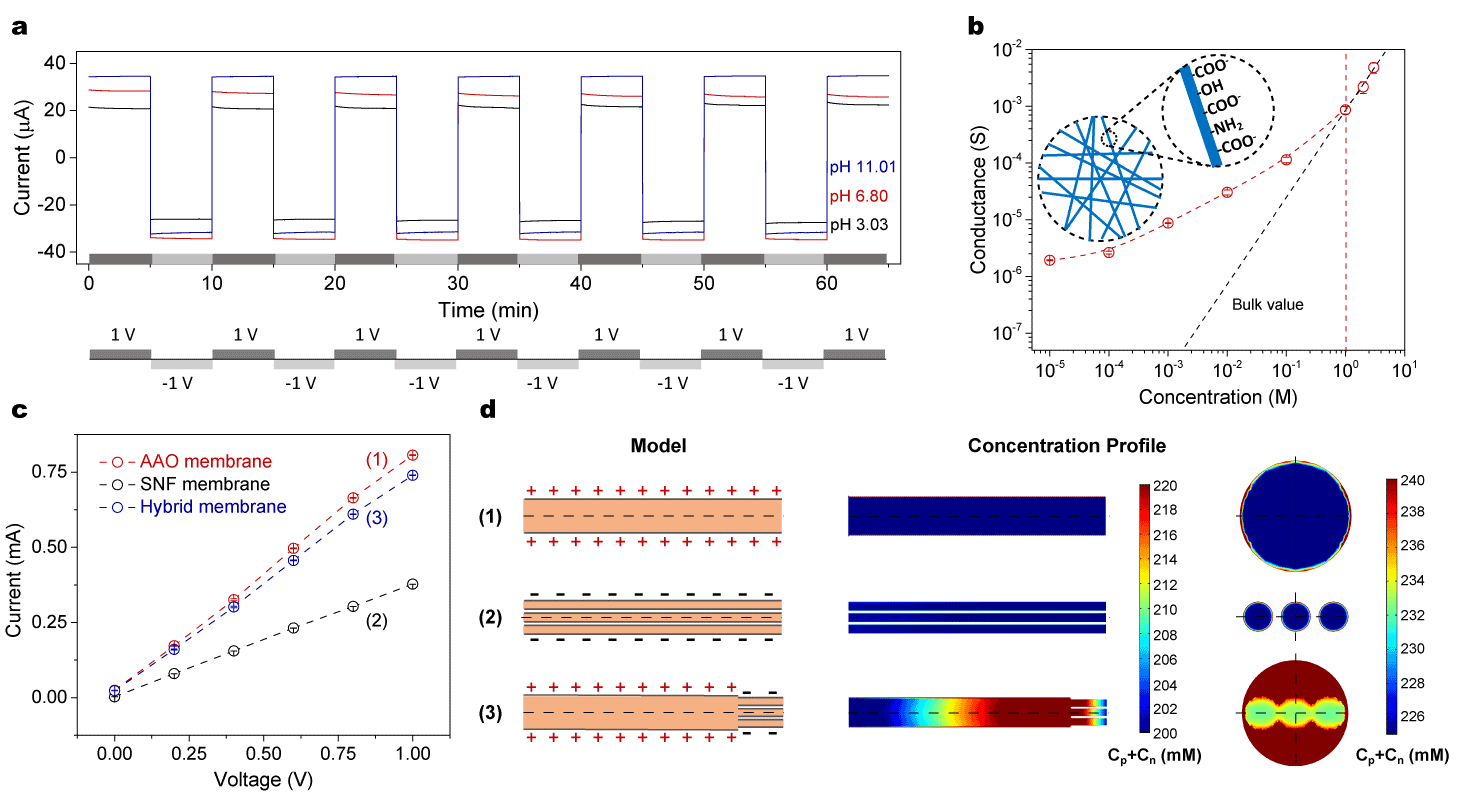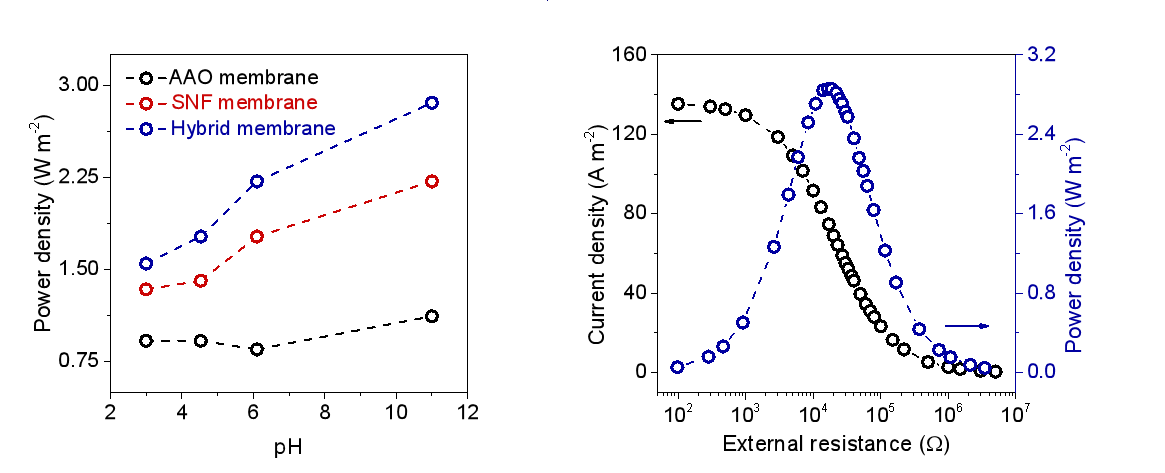With the increasing demand for energy, salinity gradient energy (also known as blue energy) at the junction of river and sea water has attracted great attention from scientists, due to its a large reserves and easy accessibility. Reverse electrodialysis (RED) is a promising technology to capture salinity gradient energy by harvesting Gibbs free energy in natural waters for sustained electrical output. The most critical component of the RED system is the ion exchange membrane. Improving the properties of membrane materials to obtain higher and more stable energy capture has become the direction of many researchers. Membrane-based nanofluid system and nanofluid technology show good ion transport performance in nanoscale environment, which brings a new idea to obtain high-power salinity gradient energy.

Figure 1. Schematic diagram of salinity gradient power generation.
Based on the previous theoretical results and aiming to further improve the salinity gradient energy conversion performance, Prof. WEN Liping’s research team adopted natural silk as the membrane components. The raw silk is treated through multiple steps to obtain silk nanofibers, which are then assembled into silk nanofiber (SNF) membrane. This kind of SNF membrane with negative charges was combined with aluminum oxide membrane containing adjustable surface polarity (pH response) to obtain a composited membrane with heterogeneous junctions for salinity gradient energy capture.

Figure 2. Fabrication process of the composited membrane.
The experimental results show that the composited membrane shows superior ion transport regulation performance and could effectively capture the osmotic energy. The output energy density of the current system can achieve 2.86 W/m2 under 50-fold concentration gradient.


Figure 3. Excellent ion transfer performance and high output power density of the composited membrane.
In addition, the experimental results display that the composite membrane with asymmetric structure, chemical composition, and surface charge polarity, can effectively promote the ion transport. The membrane also establishes a wide operating environment in a wide pH range. Especially in alkaline solution, the composited membrane shows excellent energy conversion performance, which lays the foundation for the application in the field of industrial wastewater-based energy harvesting. It is noteworthy that, owing to the abundance of β-sheet in silk protein and hydrogen bonding between the two components, the system exhibits long-term stability, which also provides a necessary premise for practical applications in near future.
The related work was published as an article in Nature Communications on August 28 (Xin, W. et al. Nat. Commun. 2019, 10, 3876-3885). The first authors are Mr. XIN Weiwen and Dr. ZHANG Zhen, and the corresponding authors are Prof. WEN Liping and Dr. KONG Xiangyu.
This work is supported by the National Key R&D Program of China (2017YFA0206904, 2017YFA0206900), the National Natural Science Foundation of China (21625303, 51673206, 21434003), the Strategic Priority Research Program of the Chinese Academy of Sciences (XDA2010213), Beijing Natural Science Foundation (2194088), Beijing Municipal Science & Technology Commision No. Z181100004418013, and the Key Research Program of the Chinese Academy of Sciences (QYZDY-SSW-SLH014).
https://doi.org/10.1038/s41467-019-11792-8
NEWS